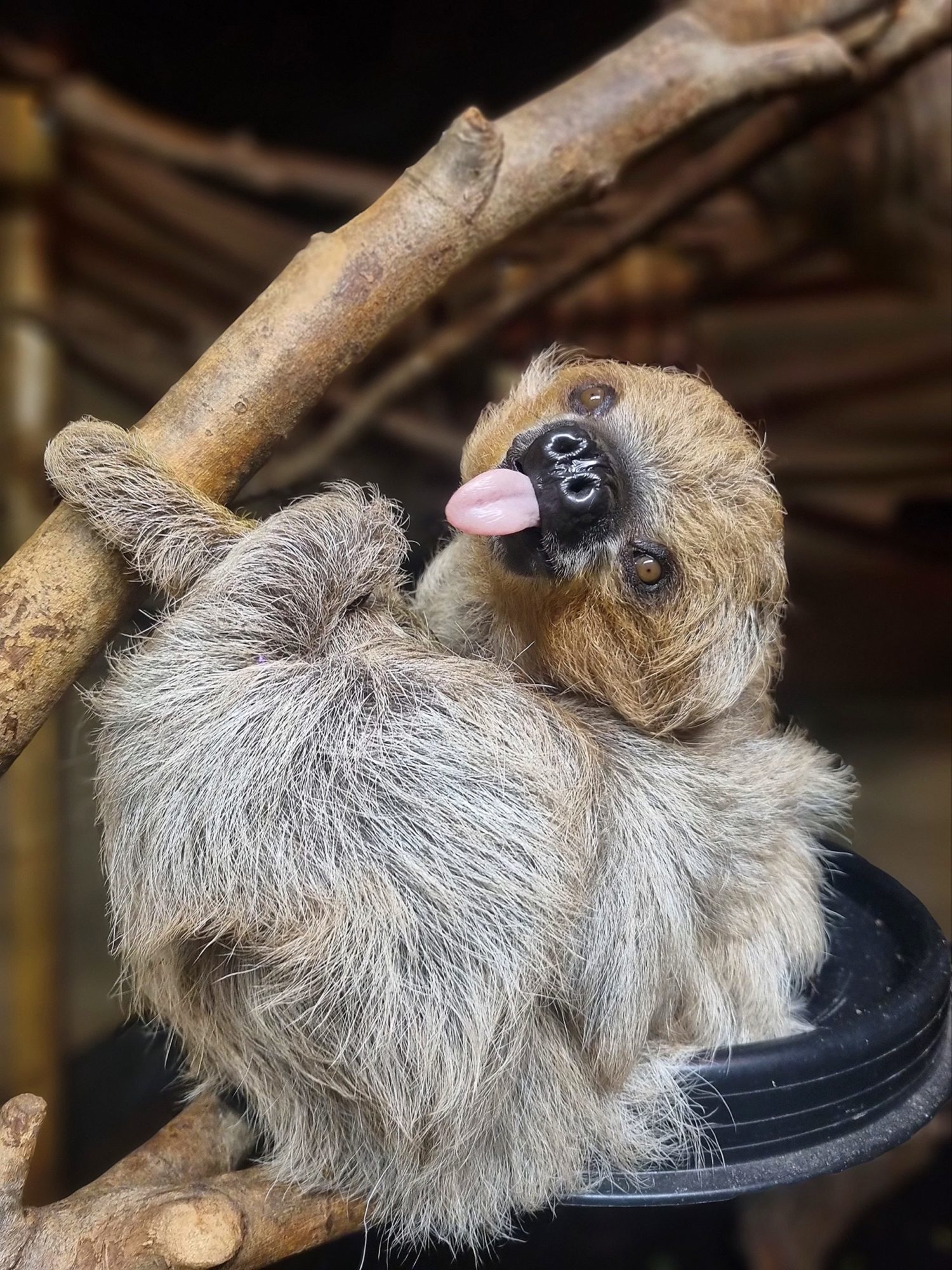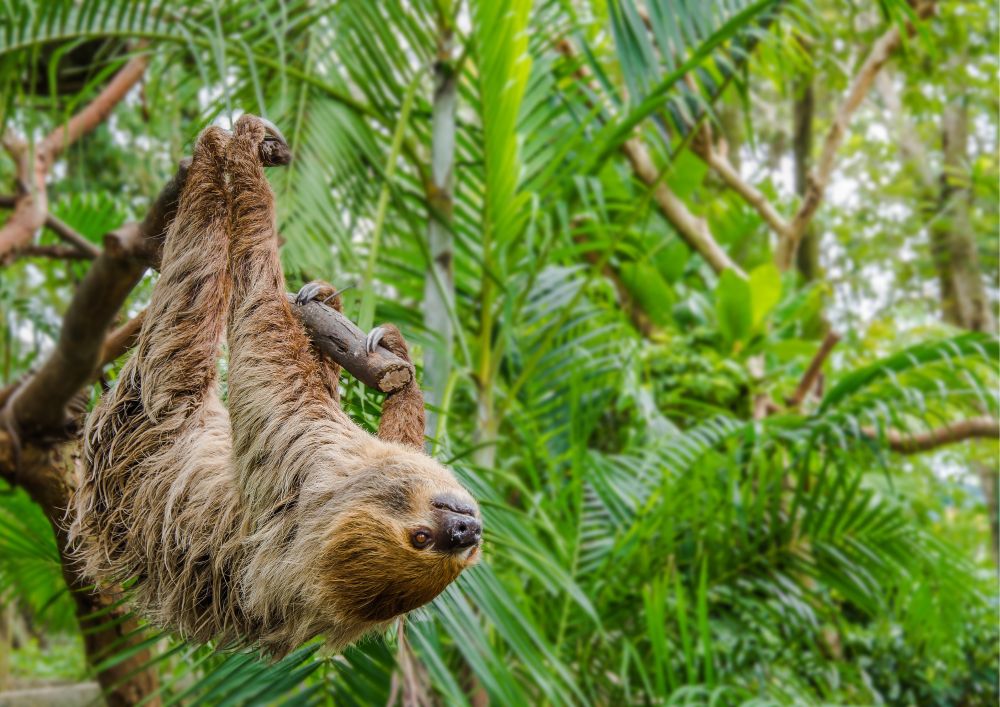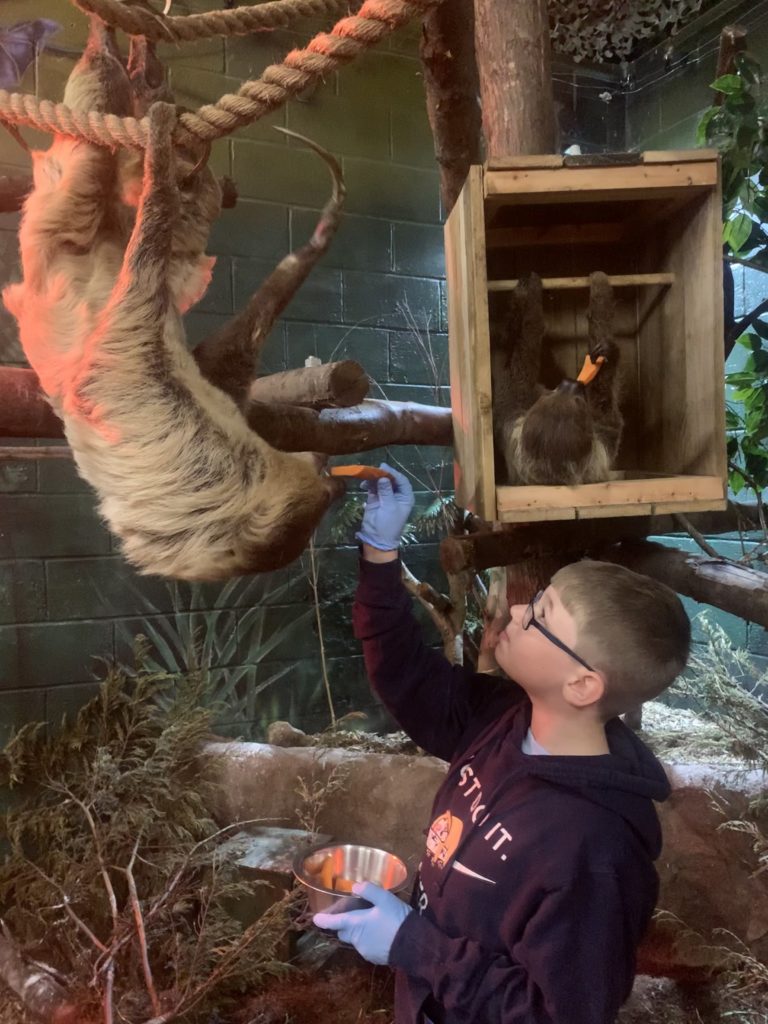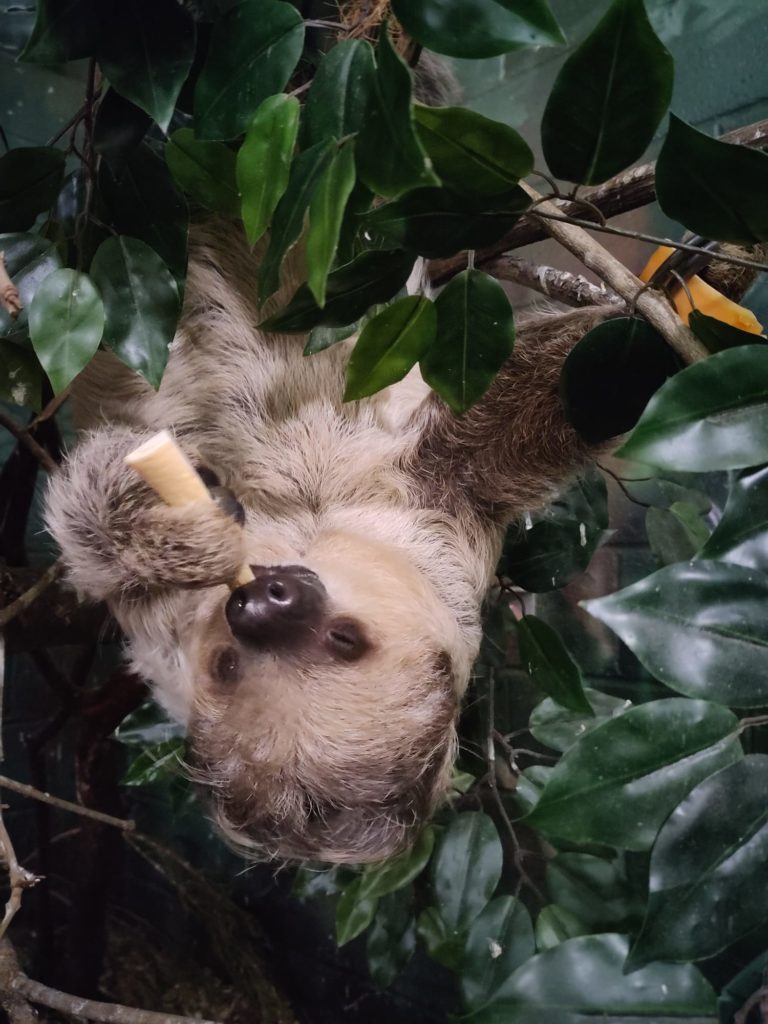

These slow moving, peaceful creatures can be found in the forests of South America.
Although listed as least concern there is a decrease in numbers in the wild. This is mainly down the destruction of their natural habitat. It’s actually quite difficult to get a real idea of numbers in the wild as sloths and people have very little contact.
Partial to a nice bit of asparagus every now and again you’ll more than likely spot Tuppee curled in a ball and catching ‘forty winks!’ You can see Tuppee and Lightcap at Folly Farm in our Tropical Trails exhibit. If you love sloths, you can adopt a sloth today for yourself or someone special. And soon you’ll be able to meet our sloths with a sloth feeding experience.
They get their name from the two large claws on their forelimbs. These can grow up to 7.5cm in length. The claws have a super strong grip and some sloth have been known to remain hanging from the trees long after death!
They are unique in the animal world in that they do spend most of their life upside down. They eat, sleep and even give birth upside down and because of this, their internal organs have actually re-positioned over a period of time.
Latin name
Choloepus didactylus
Class
Mammalia
Order
Pilosa
Family
Megalonychidae
Conservation status
Least concern
Impress your friends with everything you know about sloths!
Sloths are classed as herbivores. Their diet consists mainly of leaves but occasionally they will eat fruit and they have been known to eat bird’s eggs, lizards and insects. In the wild, they live in the rainforest so have access to a wide range of trees and plant species. At Folly Farm, our sloths eat a lot of vegetables and are particularly fond of asparagus and baby corn!
Yes! Folly Farm offers sloth adoption – the perfect gift for any lover of sloths.
They do. They include anacondas, harpy eagles, ocelots and jaguars.
Yes again! You can meet the sloths and feed the sloths on our new sloth experience in the new Sloth Forest enclosure in our Tropical Trails exhibit.
It’s due to their low energy diet. They try to save what little energy they have. They do this by moving very slowly and deliberately. And by sleeping up to 15 hours a day!
In a tree, they move at about three metres per minute, but on the ground, it’s a little slower at only two metres per minute. They’re actually quite dangerous because their claws are razor sharp but they’re not likely to catch you.
How much does it cost to feed a sloth?
You can feed our sloths on our sloth experience. It costs £85 per person and as well as the chance to feed our sloths (subject to them being bothered!) you can ask our keepers everything you’ve ever wanted to know about sloths. Plus you’ll receive a sloth cuddly toy to remember your sloth feeding experience!




